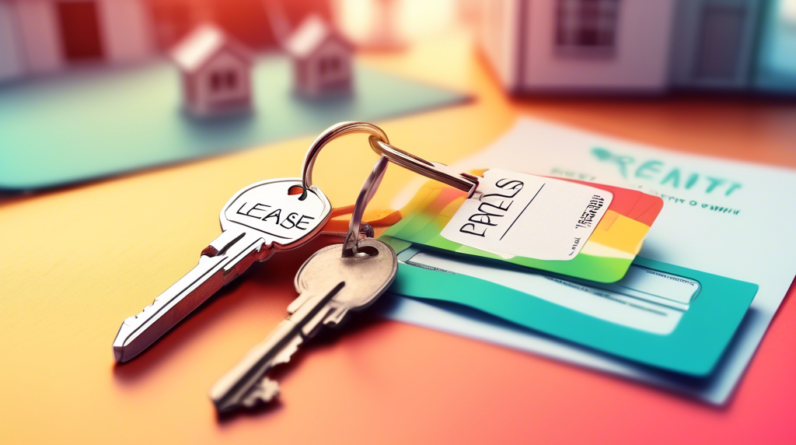
Rent-to-Own vs. Buying: Which Path is Right for You?
Navigating the world of real estate can feel like traversing a labyrinth, especially when choosing between renting-to-own and traditional home buying. Both options offer a path to homeownership, but they come with distinct advantages and disadvantages. Understanding these nuances is crucial for making a decision that aligns with your financial situation and long-term goals.
What is Traditional Home Buying?
Traditional home buying is the process most people are familiar with. It involves securing a mortgage from a lender, which is then used to purchase a property. You become the legal owner of the home upon closing and are responsible for mortgage payments, property taxes, insurance, and maintenance.
Pros of Traditional Home Buying:
- Building Equity: Every mortgage payment chips away at your loan principal, increasing your equity in the home.
- Tax Benefits: In many countries, homeowners enjoy tax deductions on mortgage interest and property taxes.
- Stable Housing Costs: Fixed-rate mortgages provide predictability in your monthly payments.
- Freedom and Flexibility: As the homeowner, you have the freedom to renovate, decorate, and use the property as you see fit.
Cons of Traditional Home Buying:
- Large Upfront Costs: Down payment, closing costs, and moving expenses can be significant.
- Mortgage Qualification: Lenders have stringent requirements, including credit score, income, and debt-to-income ratio.
- Property Maintenance: You are responsible for all repairs and upkeep, which can be costly and time-consuming.
- Property Value Fluctuation: The value of your home can go down, potentially putting you underwater on your mortgage.
What is Rent-to-Own?
Rent-to-own, also known as lease-option or lease-purchase, is an alternative pathway to homeownership. It involves a contractual agreement where you rent a property for a specific period, with the option to purchase it at a predetermined price before the lease expires.
Pros of Rent-to-Own:
- Lower Entry Barrier: Rent-to-own often requires a smaller upfront option fee compared to a traditional down payment.
- Time to Improve Credit: It provides time to improve your credit score and save for a down payment while locking in a purchase price.
- Test Drive the Property: You can experience living in the home and neighborhood before committing to a purchase.
- Potential Appreciation Benefits: If the property value increases during the lease term, you benefit from the appreciation when you purchase.
Cons of Rent-to-Own:
- Higher Than Market Rent: A portion of your rent payments may go towards the purchase price, but you might pay higher rent than market value.
- Risk of Losing Option Fee: If you decide not to purchase the home, you could forfeit the option fee and any rent credits accumulated.
- Limited Property Rights: You have limited rights as a renter and may not be able to make significant changes or renovations.
- Contract Complexity: Rent-to-own agreements can be complex and require careful review by a real estate attorney.
Rent-to-Own vs. Buying: Key Considerations
Choosing between renting-to-own and traditional home buying depends on individual circumstances, priorities, and market conditions. Here are key factors to consider:
Financial Situation:
- Savings and Credit Score: Traditional home buying typically requires a substantial down payment and a good credit score, while rent-to-own may offer lower upfront costs and more flexible credit requirements.
- Debt-to-Income Ratio: Lenders consider your debt-to-income ratio when approving mortgages. Rent-to-own can provide time to improve this ratio.
Housing Market Conditions:
- Seller’s vs. Buyer’s Market: In a seller’s market, traditional buying can be competitive, while rent-to-own might provide more negotiating power. Conversely, in a buyer’s market, traditional buying might offer better deals.
- Property Value Trends: If property values are expected to rise, traditional buying allows you to benefit from appreciation sooner. However, if values decline, rent-to-own can protect you from potential losses.
Personal Circumstances and Goals:
- Timeframe for Homeownership: Rent-to-own can be suitable for those who need time to improve their financial situation or are unsure about long-term plans. Traditional buying is better if you’re ready to commit.
- Lifestyle Preferences: Rent-to-own offers flexibility if you’re uncertain about the neighborhood or want to experience homeownership before fully committing. Traditional buying provides more control and customization options.
Making an Informed Decision
Choosing the right path to homeownership requires careful consideration of your financial preparedness, market dynamics, and personal goals. Consulting with a qualified real estate agent and financial advisor can provide valuable insights and guidance tailored to your specific situation.
Remember that there’s no one-size-fits-all answer. It’s crucial to weigh the pros and cons of both rent-to-own and traditional home buying to make an informed decision that aligns with your aspirations and sets you on a path to successful homeownership.







